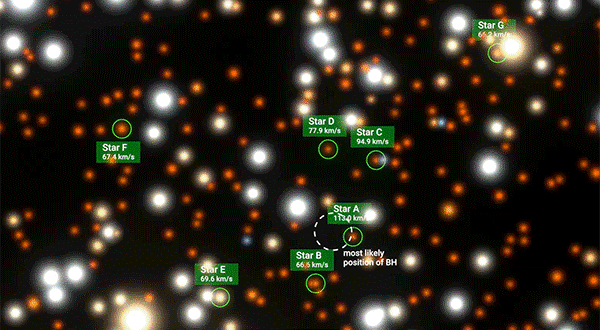Hello Nature readers, would you like to get this Briefing in your inbox free every day? Sign up here.

Super-Kamiokande’s underground tank must be drained for major maintenance work.Credit: Takumi Harada/Yomiuri Shimbun via AP/Alamy
Japan’s Super-Kamiokande observatory is seeing what might be the first hints of neutrinos from exploding stars. Neutrinos are subatomic particles that can come from various cosmic sources; those from inside supernovas could provide information about potentially new physics occurring under extreme conditions. Although the data from Super-K are still too weak to claim a definitive discovery, researchers hope to eventually prove that neutrinos are so stable that those from ancient supernovas are still around.
A biodegradable compound derived from seaweed forms a gel when it comes into contact with blood. In tests with an artificial vagina, the product was significantly better at retaining blood in a menstrual pad than commonly used fillers, which can leak when saturated. The gel also eliminated spillage from menstrual cups.
It’s now possible to make genetic tweaks to the gut bacteria in living mice. Researchers used a bacteria-infecting virus to transport a ‘base editor’ to the Escherichia coli population inside mice. In an experiment that targeted a gene for enzymes involved in antibiotic resistance, around 93% of the E. coli had been edited after eight hours. The tool “opens the possibility of editing microbes to combat disease, all while preventing the engineered DNA from spreading”, says chemical engineer Chase Beisel.
The brain circuit that causes intolerable nausea in some people taking weight loss drugs such as semaglutide (sold as Wegovy or Ozempic) is separate from the one that creates a feeling of fullness and prevents people from eating more. Experiments in mice have shown that nausea is produced by the drug’s action in a part of the hindbrain. “The implication is that if we can now selectively target the satiety circuits without targeting the aversion circuits, we could potentially develop better drugs with fewer side effects,” says neuroscientist Amber Alhadeff.
Researchers have engineered cultured meat that, when heated, releases beefy flavours. The trick is to add compounds associated with the Maillard reaction — which creates many of the flavours in cooked food — to lab-grown muscle cells.
Reference: Nature Communications paper
Features & opinion
Lab-made plasmids have problems. An analysis of thousands of these circular DNA structures, which are used in genetic engineering, discovered that nearly half of them had design flaws. The most rampant errors were related to plasmids’ use in gene therapy. This means that there are probably many papers containing results that can’t be reproduced, says geneticist Hiroyuki Nakai. New lab members should spend time learning from experienced plasmid constructors, he recommends. Another way for labs to avert issues is by publicly sharing their plasmid sequences, says Melina Fan from the non-profit Addgene, which provides an open-access repository.
Reference: bioRxiv preprint
The Human Genome Project, the audacious scheme to sequence the entire stretch of our DNA for the first time, was intended to represent us all. To achieve this, and protect those who donated their genetic data to the cause, the output was meant to be a patchwork of many people’s contributions. But when push came to shove, practical difficulties and tight timelines meant that most of the final sequence came from one man: an anonymous volunteer known as RPCI-11. An investigation by Undark reveals the ethical tangle at the centre of one of the most ambitious scientific projects of all time.
Read more: A wealth of discovery built on the Human Genome Project — by the numbers (Nature | 9 min read, Nature paywall)
Image of the week

Images taken by the Hubble Space Telescope point to an elusive intermediate-size black hole in the star cluster ω Centauri. Midsize black holes occupy the no-man’s land between the ‘super massive’ ones thought to lie at the centre of most galaxies and much smaller ones that have about as much mass as a single large star. So far, most candidates have turned out to be neutron stars upon closer inspection. (Nature | 5 min read)
Did you ever feel like wanting to publish useless nonsense or take on the persona of reviewer 2 to deliver some ‘helpful’ comments? Now you can, without risking your career, with The Publish or Perish Game. The card game is, according to one peer reviewer, perfect for a lab party.
Your no-nonsense emails are always welcome at briefing@nature.com.
Thanks for reading,
Katrina Krämer, associate editor, Nature Briefing
With contributions by Flora Graham, Gemma Conroy and Katharine Sanderson
Want more? Sign up to our other free Nature Briefing newsletters:
• Nature Briefing: Microbiology — the most abundant living entities on our planet — microorganisms — and the role they play in health, the environment and food systems.
• Nature Briefing: Anthropocene — climate change, biodiversity, sustainability and geoengineering
• Nature Briefing: AI & Robotics — 100% written by humans, of course
• Nature Briefing: Cancer — a weekly newsletter written with cancer researchers in mind
• Nature Briefing: Translational Research — covers biotechnology, drug discovery and pharma
